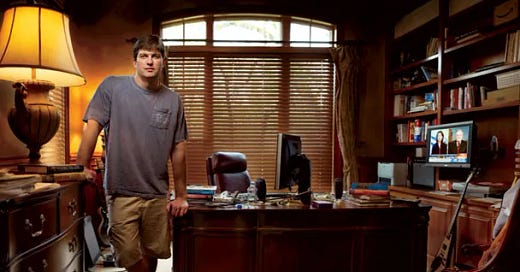Doubling Down as the Losses Pile Up
The absurd conviction in Michael Burry's 2006 shareholder letter
Above is a picture of a young Michael Burry standing beside the desk where he foresaw the end of the bull market that began in 2003; following the aftermath of the tech bubble a few years earlier. America had just begun to recover from a stock market crash fueled by overzealous optimism. The internet, a spectacle previously thought to be a niche innovation, had infected the globe. While the foresight of investors pouring money into anything with “dot com” in its investor prospectus was correct directionally, as often happens with new technologies, the funding came too hard and too fast. While this period of stock market history is littered with failures, several losers of the dotcom era are some of the most well know corporations today. Moreover, many of today’s largest companies were constructed from the rubble left over after the tech bubble popped. The internet genie was out of the lamp and there was no stopping it.
Greenspan’s Cruel Twist of Fate
In the build-up to the tech bust, …




